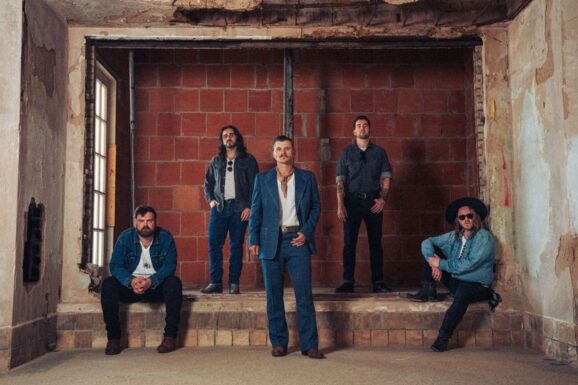Jeremy Rose is a Sydney, Australia-based woodwind specialist, bandleader, label, and festival director whose music involves the intersection of genres and cultures. His label, Earshift Music has released over 60 albums and his Earshift Orchestra is a global performing unit. The concept for this project, Disruption! The Voice of Drums” is to feature the drums as the principal voice, almost a reversal of the normal situation when horns, keys, or guitars, instruments typically associated with melody and harmony, have that role. Here the latter have a supportive role with drums in the foreground while they move in and out of focus. Chords and harmonies have a diminishing rather than an enhancing effect. They provide the space for virtuosic drummer Simon Barker, described by Rose as “playing things on the drums that are technically impossible for ordinary drummers.” The other drummer is Chloe Kim who embraces Barker’s ideas but informs her mix of rock, hip-hop, and jazz through her Korean-informed approach. The project has the support of the Australia Council for the Arts.
There are 11 tracks split between Barker and Kim in collaboration with Rose. The opening “Chant 12 for Pacific Islands” begins with primal beats of drums as if in a tribal ceremony, before they move to the forefront, then the ensemble horns, and then back to the forefront again in alternating sequences. The final piece, Barker’s “Currents and Tides, “a feature not only for the drummers but the trumpeter, bears similarities to the opening piece, based on solo drum work in solidarity with Kiribati and the Marshall Islands.
In some respects, having just heard Chief Adjuah’s (formerly Christian Scott) it evokes his sound with percolating drums and djembe except with a Pacific rather than a West African twist. It is a fascinating listening experience from the get-go because we’ve all been virtually trained to have the accompanying instruments step forward. So, as you wait for that, those same instruments recede instead. Behind ‘those same instruments” are Rose on tenor and bass clarinet, Ben Carey (modular synthesizer), Jacques Emery (bass), Hillary Geddes (guitar), Novak Manojlovic (piano, keys), and Thomas Avgenicos (trumpet).
“Road to Body,” another collaboration with Barker, is airier and ethereal but laden with synthesizer and bass clarinet underpinning the drums which assume prominence at about two and half minutes and continue to assert their presence as the other horns enter and retreat in haunting fashion. In three of his four pieces, Barker is employing coils – densely layered collections of rhythmic patterning, in this case imagining long-distance running in Japan and the feeling of bare feet touching unique patches of road. “Mirage Returns” with its layered rhythmic patterns is also rooted in similar long-distance running concepts and the sensation of bare feet onto the ground. Avgenicos is especially impressive on trumpet here while the drummers engage in the use of gongs, cymbals, to shroud his mostly dark tones. In composing the pieces, Rose turned to solo projects of the respective drummers, indicating that Simon’s use of dense, fast rhythms and rhythmic variants posed exciting and challenging opportunities, certainly evident in these first two pieces.
“O, Yeok, Chil-Chae” is a traditional piece arranged by Kim and Barker while the horn-infused “The Trace” from Kim displays the drum kit’s ability to produce melodic concepts. Kim was inspired by the movements of a small green bird, attempting to emulate and represent the bird’s speed and sounds from the wing movements through the drum in “Appear to Be.” The horns engage in intriguing, bordering on free jazz harmonics in both pieces. “Hold Tight” is penned solely by Rose and has a similar ethereal quality to “Road To Body” with the drums sitting atop the synths and feedback. Kim’s “Wave Sad, Weave Slow” is an improvisatory drum piece with an accent on textures and timbres while her “Here Again” is an expressive approach with a nod to inventively, somewhat dissonant guitar work from Geddes as the drums beat frenetically to a traditional Korean rhythmic cycle
This unique, oft mysterious, and dramatic music creates powerful visual images too. It’s a deep listening experience that while edgy at times, is ultimately calmly rewarding.








